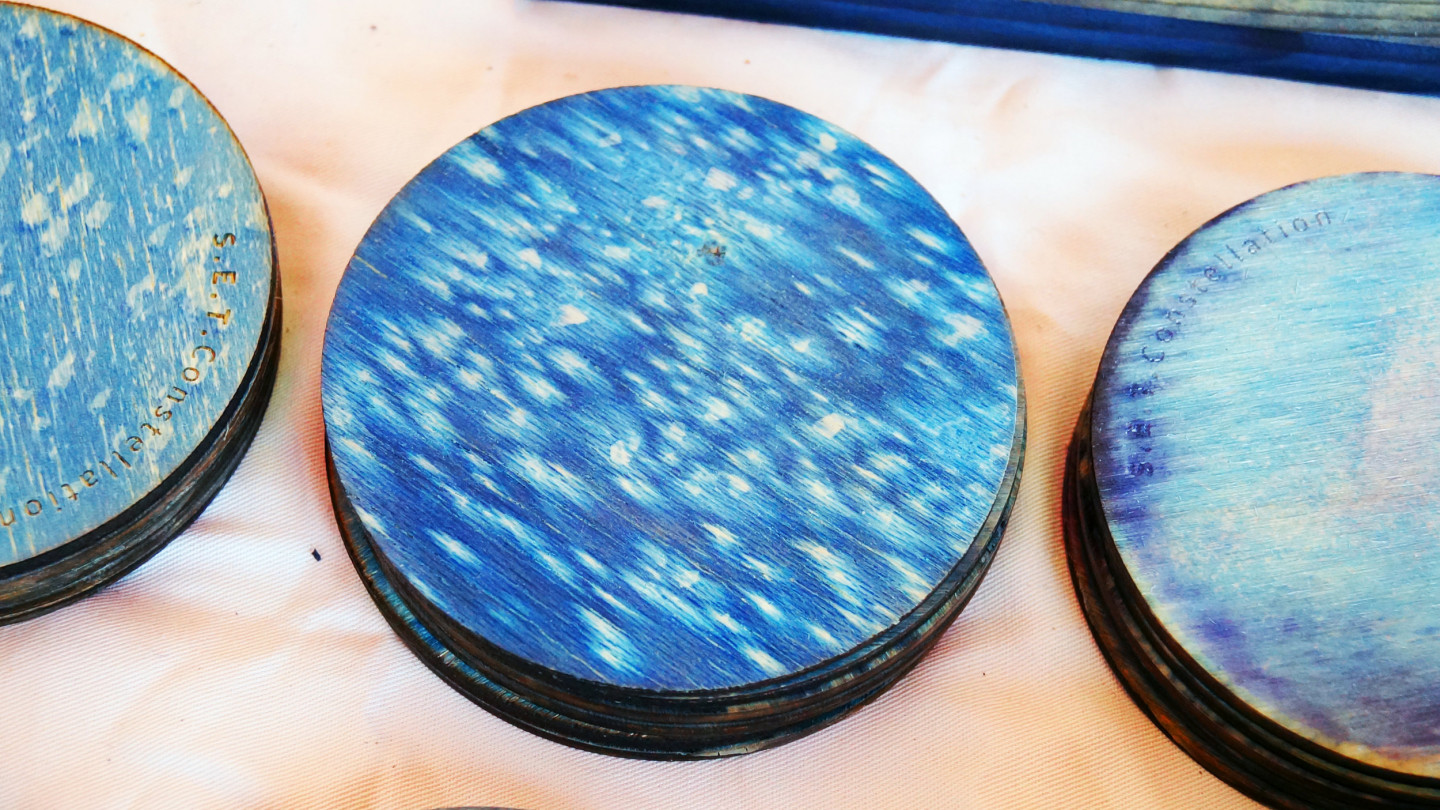Atmospheric Wood is a research project based on a historic printing technique called ‘blueprint’.
When wood interacts with the sun, wind and rain, it cracks, fades and decays — materials change appearance depending on the environment they are subjected to.
Developed by Egle Tuleikyte, Atmospheric Wood is a research project based on a historic printing technique called ‘blueprint’. Reviving and interpreting this traditional craft, Tuleikyte aligns it with contemporary architecture and design. The detailed designs resemble the patterns found across the natural world such as insect footprints, swirling clouds and star-filled skies.
Blueprint techniques are developed from ‘cyanotype’ a precise photographic printing process first developed in 1842. Founded by scientist Sir John Herschel in 1842 — as a method of replicating diagrams — cyan-blue ‘blueprints’ served as low-cost copies of drawings which could be used by construction professionals on building sites.
Having based her craft on the cyanotype process, Tuleikyte exposes untreated wood to natural light and minerals (in both liquid and crystal form). After time, the wood develops an elegant assortment of blue hues and a maze of pointillist patterns. The interaction between the UV light sensitive solution and sunlight is key in developing the wood’s patterns, and the results vary depending on the environmental conditions.
To learn more about Tuleikyte's work, visit her website and Instagram page.
‘


